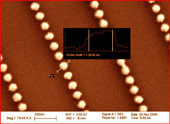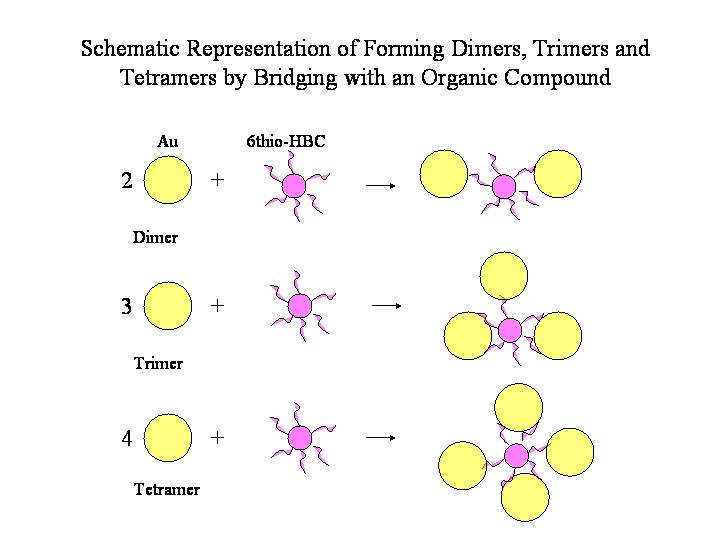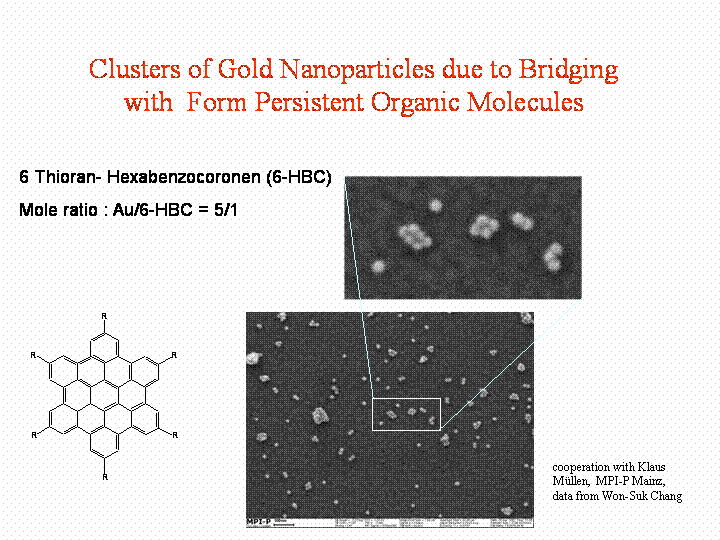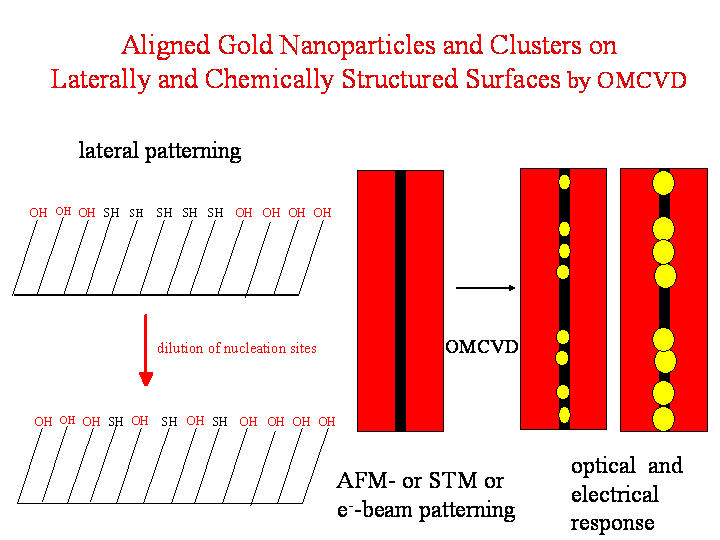Research
- Research Overview
- Organo Metallic Chemical Vapor Deposition
- Optical Response of Gold Nanoparticle Clusters
- Evanescent Wave Analytical Tools
- Surface Functionalisation
- Detection of Optically Active Molecules
- Optical Tweezers in Evanescent Fields
- Evanescent Microscopy and Spectroscopy
- Research Opportunities
- Research Group
- Former Coworkers and Students
- Collaborators
- Publications
Contact Information
Prof. Silvia Mittler
Physics & Astronomy 240
(519) 661-2111 x.88592
smittler@uwo.ca
FAX: (519) 661-2033

Gold Nanoparticle Clusters and their Optical Response
The optical response, namely the plasmon resonances of coupled particles are and will be investigated here. Nanoparticle clusters can be formed by connecting gold nanoparticles via bridge molecules, typically organic structures. One can also use the OMCVD technique and laterally structured substrates to grow gold nanoparticles in desired areas only. By developing patterning techniques down to the scale of the nanoparticles, artificial alignments in pairs, triples and so on should be possible. The size dependency as well as distance dependencies will be of interest. Especially the influence of the polarisation direction will play an important role.

Spherical metal nanoparticles show a plasmon resonance in form of an absorption peak. The position of the maximum absorption depends on the metal and on the size of the nanoparticle. For a given metal the wavelength of maximum absorption shifts to higher wavelenghts with increasing particle size. The widths of the absorption line represents the size distribution of the nanoparticles. In this example gold nanoparticles with a diameter of 12 nm where coated with an organic material, leading to a red shift of the absorption maximum, which depends on the mixing ratio between the gold nanoparticles and the organic compound.

Here a scheme is shown which illustrates the cluster formation with the help of organic molecules which serve as a bridge or a glue between two or more individual nanoparticles. The binding between the organic compound and the gold nanoparticle can be achived by sulfur groups, like thiols, sulfides or thioran groups located on the organic compound.

The binding of sherical gold nanoparticles with a diameter of 12 nm was accomplished with the help of a form persistent molecule - 6 thioran-hexabenzocoronene - carrying 6 thioran groups at the end of a spacer for binding to the gold. The elctron microscopy images show immobilized gold clusters. One finds monomers, dimers, trimers, tetramers and larger clusters.

A new strategy to fabricate gold nanoparticle clusters is the lateral patterning and dilution of binding/nucleation sites on a surface for growing nanoparticles via OMCVD methodes at desired locations only. Depending on the density of the nucleation sites the amount of particles and therefore their mean spacing should be controlable. The final distance between them can be controlled by the time of the OMCVD process, the particle size. By fabricating more complicated template structures, e.g. triangles or chircles with different diameters specific clusters might be grown.

The position of the plasmon resonance depends on the size for spherical nanoparticles. If one assumes very asymmetrically shaped metal nanoparticles, as seen in the scheme, one expects a different optical response by probing the particles two main axis with adequate polarisation directions.



